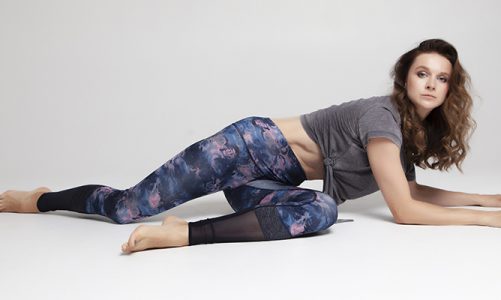The goal of strength training: to comprehensively exercise all the major muscles of your body. Using pictures of exercises recently posted by Arnold Schwarzenegger on his Instagram, we will illustrate a complete strength training workout suitable for absolutely everyone (and for that we will add substitute exercises).
Warm-up
If warming up at the end of a session is considered controversial, it’s important to warm-up. And it’s not just about warming up the body (there are studies and statistics – it markedly reduces the risk of injury – and this is important), but also about preparing the brain and psyche. You warn the body ‘this is going to be a workout’ and it turns on the hormonal mechanisms of the sympathetic nervous system.
Shifting your thoughts from what was before the workout to what is about to happen is also an important procedure. You should think about the training session. It is also useful to do the same before work or rest, to immerse yourself in reality, so to speak.
For the warm-up you can do any light exercise for 5-10 minutes. Rotate your arms at the shoulder, elbow or wrist joints, twist your legs, bend forwards and sideways, jump on the spot, remember the school ‘running on the spot’ or just do jumping jacks:
The main part of the workout
At home, it makes even more sense to do a full-body workout (i.e., load all muscles in one workout) rather than a split workout (where one workout loads one part of the muscle, another part loads another).
Doing a full-body workout is as easy as two:
Mentally divide your body into major muscle groups,
Do 1 of any exercise for each muscle group. Do 1 to 3 sets of each exercise – depending on your fitness. Do a total of 5-8 exercises per workout. And in all exercises taken together it is enough to do 16-24 approaches. If you are a beginner, 1 approach in each exercise is enough for the time being.
Here are the muscle groups and movements that these muscles do.
Legs
- Gluteus muscles – extension at hip joint.
- The anterior thigh muscles – extension at the knee joint.
- Posterior thigh muscles – hip extension or knee flexion.
- The tibialis muscles are flexion of the foot.
- Back
Upper back muscles – back shoulder movement.
Mid back muscles – downward movement of the shoulder.
Chest
Chest muscles – forward movement of upper arm.
Arms
- Shoulders. Upward movement of upper arm.
- Biceps. Flexion at the elbow.
- Triceps. Extension at the elbow
Corps
Muscles of the lateral part of the body. Bow and twists
Abdominal muscles (oblique, straight, etc.). Flexion of the spine, holding back from extension.
*Other major muscles are flexors and extensors of spine, but they are involved in many exercises on other muscle groups, there is no need to focus on them.
By starting to use oral steroids, the effect of training will be much more powerful. Check it out for yourself!
IMPORTANT QUESTIONS
How many sets should be done in 1 exercise: if you just start in weight training, then do 1 set, then (if muscles do not bother you on the second day after training) start doing 2 sets and then 3 sets. Doing 4-5 sets of each exercise makes no sense and has no effect.
How many rests between sets: not so important for a non-athlete. But the general premise from scientific research is to rest enough to recover and fully load in the next bout. If you FEEL like 3-4 minutes rest between hard approaches – you’re welcome. If you want (and can) vomit after one minute – this is your business.
How many exercises you should do: 1 for each muscle group. Sometimes, if you are not in the mood for it, you can easily skip the part you are not in the mood for (just not the legs, of course), or vice versa you can do 2 whole exercises for legs.
In which order to do the exercises: it is not so important for a non-athlete, but it is better to do the big muscle groups (legs, back, chest) before the smaller ones. Try it the other way round and you will find that this way you are more comfortable to exercise.
How often to change exercises: it is not so important for a non-athlete, but sometimes exercises (within a muscle group) need to be changed. The body reacts better to a load that is not familiar to it.
With what weight: with such a weight that you must do it from 5 to 15 times. But this is not always possible in home training. For example, it is possible to squat without weight to a certain degree of fatigue 20, 30 or more times. The decisive thing is the degree of fatigue or the fact whether or not you do it to the point of muscle failure. It is best to be guided by the degree of fatigue: the less trained you are, the earlier you should stop. Only people with a high level of training are recommended to sometimes do until muscle failure.
Whether you have to do it to the end (so that you cannot do it more than once): it is possible to do it to the end sometimes, but do not do all the exercises in one day (only 1-2) and do not do them to the end all the time or every week. It is possible to make excellent progress without performing even one exercise until muscle failure. The most dangerous thing about the ‘thrust’ is that your technique suffers and you risk to get injured and to quit our beautiful physiotherapist ranks for a long time. In general, if you feel that you cannot do the exercise in the ‘right’ trajectory you must stop that gussying up and give up the weight.
How often you have to change weight: it is not so important for a nonathlete, but if you feel that it is easy – add a little. (!) Be sure to do unloading days or weeks – when the load is lower by 20-50%, intentionally underload on these days. This is the only way you can progress the next week. Always only adding weight is a deadly strategy for progress and the psyche.
How much time to train: the described workout can take both 25 minutes (if 1 approach) and 45 minutes (if 3 approaches, but briskly) and is quite enough.
How many times a week to train: the best is 3 times. But even 1 full workout per week will give an increase in strength and muscle (yes, there are studies), albeit not as much as 3. It’s much better to train once a week always than to train 5 times a week for a month in your life.



